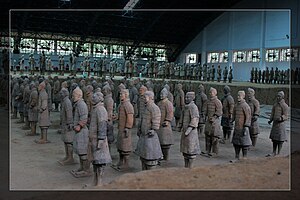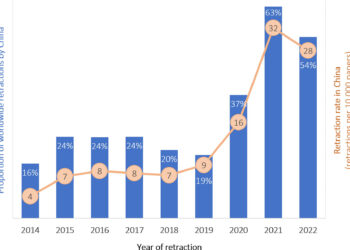
- Image via Wikipedia
In the age of abundance, there’s more information than ever — more options, more output, more sources. News is available 24 hours per day from dozens of sources. From email boxes to Facebook to Twitter to widgets on various sites, information comes flooding in at us.
While abundance spills over the passive filters that evolved during the era of scarcity, it also creates more choice.
And, oddly, it creates less waste for the consumer.
From ala carte song purchases from iTunes to on-demand cars via ZipCar to per-show or per-movie purchasing, consumers have new options to create efficiencies in an information economy that was previously predicated on making them pay for things they didn’t want or use.
The scarcity business model thrived on packaging waste alongside value, then selling the combination for an inflated price — songs you didn’t really want you paid for anyhow when you bought a CD; a car that sat idle 20 hours each day but which you still paid for as if you needed it all 24 hours; a cable television installation with 600+ channels, only 12 of which you ever watched, still cost you as much as if you watched them all (while allowing the cable vendor to rack up charges from content providers, too). In scholarly publishing, the Big Deal is predicated on packaging waste and creating the perception of efficiency.
But now people are buying single songs, using car-sharing schemes, canceling cable and moving to streaming ala carte services. Abundance is creating control for consumers and changing staid business models across the board.
How can this be? How can scarcity create waste that can be turned to a business model’s advantage while abundance creates efficiency that makes it harder than ever to remain profitable while providing content?
It seems a paradox.
But the paradox unlocks when you consider that scarcity encouraged aggregated packaging, demanded bulk production of physical goods, and allowed for provider-defined latency, each of which was a form of supplier-controlled waste. As long as waste contributed to profitability, it was defensible.
Aggregation in the age of scarcity was nothing more than attempts to scale scarcity so that it appeared to be abundance, when in fact it was only scarcity frosted with pale comparisons of the things we really valued, much like the Chinese emperor’s terracotta army in Xian is merely the semblance of abundance. (Now, aggregation is dynamic and limitless, so it is truly abundance.)
Bulk production is nothing more than trying to overcome barriers of distribution and create cost efficiencies while doing so.
Latency as defined by the provider (think of the days when afternoon newspapers could exist) allowed for time for the packaging and bulk production to occur.
Abundance — true abundance — allows customers to discriminate in new ways. The asymmetry of choice goes against the producer, whereas in scarcity the asymmetry cut against the consumer, eliminating choice and allowing for producers to become a bit set in their ways, a little spoiled.
Waste has been a hallmark of profitability for publishers — from wasted circulation (copies not really read but counted in circulation) to wasted pages (articles not really read but counted in pricing perceptions) to wasted advertising (ads not really read but sold at the same price as those which were read) to wasted reprints (copies of articles bought in excess of demand). Because targets were imprecisely defined, feedback nearly impossible to measure, and usage a foreign concept, rough proxies were used — circulation measures, surveys to quantify concepts like depth of read and ad exposure, sales force predictions, and impact factors.
Now, precision can be brought to bear — and precision eliminates waste.
In fact, it may even put the burden of waste on the producer whereas in the past it was on the consumer. Production costs are never fully recovered when the wasted pieces aren’t subsidized via packaging and aggregation. Fixed costs aren’t recovered for the same reason.
The asymmetry of choice in the age of scarcity allowed providers to define the available choices. Now, consumers choose from a myriad of sources and versions. Any asymmetry they may experience in the future could be the asymmetry-of-choice — controls they impose for their own convenience, not for the convenience of producers. This creates uncertain demand for providers, and the move toward a more efficiently utilized information environment will have huge effects on all our familiar aggregations, packages, and delays.
It also creates the need to shift from what was once scarce — information — into finding what is truly now scarce — something else. Seth Godin contemplated this in 2009:
We spent a generation believing certain parts of our business needed to be scarce and that advertising and other interruption should be abundant. Part of the pitch of free is that when advertising goes away, you need to make something else abundant in order to gain attention. Then, and only then, will you be able to sell something that’s naturally scarce. This is an uncomfortable flip to make, because the stuff you’ve been charging for feels like it should be charged for, and the new scarcity is often difficult to find. But, especially in the digital world, this is happening, and faster than ever.
What is truly scarce in our realm? Even in a world of keepsake content — unique, proprietary reports — the abstracts, discoverability, and second-order coverage of materials we publish are all abundant. Clinging to primary reports isn’t sufficient. The information they partake is no longer scarce.
What is scarce in what we do? And how do we leverage that to create new value?
Discussion
5 Thoughts on "The Asymmetry of Waste in the Age of Abundance — A Reversal of Scarcity’s Balance"
Great post, Kent, and I think getting our heads around abundance is a key issue. However, in a sense this is not really as much about abundance as it is about discovery and distribution. I’d make the case that the stuff was always there — the songs, the articles, the movies, the information in one form or another (even unpublished novels in drawers because they couldn’t find a publisher) — but we either couldn’t find it (we didn’t know it existed or at least we didn’t know where to find it) or there were barriers to actually _getting_ it. What has happened is that the barriers to discovery and distribution have suddenly dropped away, and we can suddenly see all the stuff (much of which was there all along), and the cost of _distribution_ (not creation) has gone close to zero. It seems to me that this is more about availability than abundance.
Bill,
I think it’s a bit of both, and disaggregation is a big key to re-aggregation and ala carte availability. At the same time, we each probably have a “Publish” button in our lives somewhere, so there is more information out there. Also, with personal phonecams, videocams, etc., multimedia is now a personal capability.
Discovery and distribution have changed, but so has the sheer amount of information. I’m still puzzling over the dilemma of whether to fuss over the editorial filter or whether it’s better to let it all out there and let trust networks and personal filters deal with it. PLoS and others don’t seem to have been hurt by publishing most of what they get in the right model, so maybe quality isn’t as obvious or defensible as we thought?



